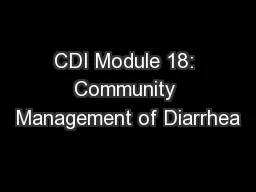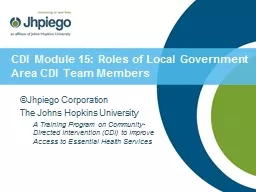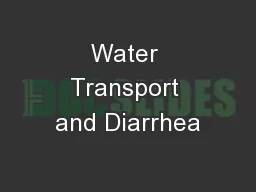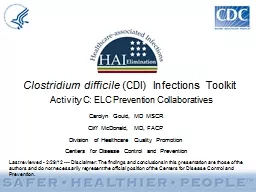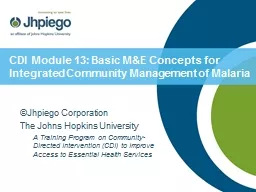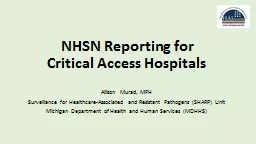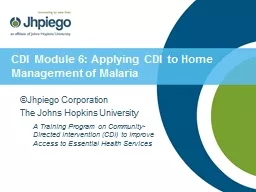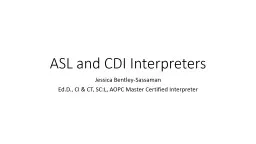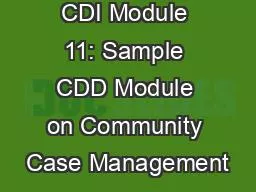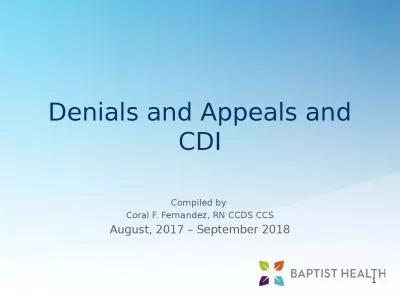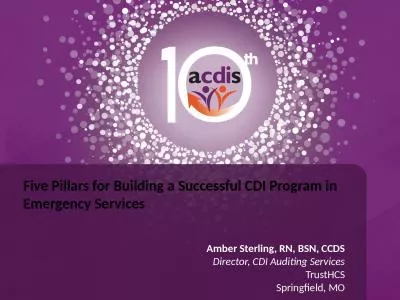PPT-CDI Module 18: Community Management of Diarrhea
Author : myesha-ticknor | Published Date : 2016-03-21
A Training Program on Community Directed Intervention CDI to Improve Access to Essential Health Services Module 18 Objectives By the end of this module learners
Presentation Embed Code
Download Presentation
Download Presentation The PPT/PDF document "CDI Module 18: Community Management of D..." is the property of its rightful owner. Permission is granted to download and print the materials on this website for personal, non-commercial use only, and to display it on your personal computer provided you do not modify the materials and that you retain all copyright notices contained in the materials. By downloading content from our website, you accept the terms of this agreement.
CDI Module 18: Community Management of Diarrhea: Transcript
Download Rules Of Document
"CDI Module 18: Community Management of Diarrhea"The content belongs to its owner. You may download and print it for personal use, without modification, and keep all copyright notices. By downloading, you agree to these terms.
Related Documents

